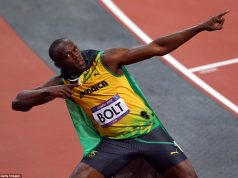By Robert Taylor, Special to TrackAlerts.Com
The history of athletics is littered with memorable performances that stand the test of time. The list is long, thus for the sake of brevity, I will select the few I think that stands above the rest. The first one that come mind is Emil Zatopek of Czechoslovakia’s 1952 Helsinki Olympics performances. He completed a triple gold medal feat of 5,000m, 10,000m and the marathon.
That is one challenge I do not see any of the current generation of athletes attempting. The fact that an athlete takes up the challenge of competing in the long distance triple is a feat in and of itself. Winning all three events at the same Olympic Games goes beyond extraordinary. Nothing in life is impossible; but seeing someone repeating this feat anytime soon is definitely in the extremely low probability region.
The next athlete would be Florence Griffith-Joyner, also known as Flo Jo. This was a charismatic and beautiful athlete. The way she ran the double at the 1988 Seoul Olympics was out worldly. In the 100m, she ran times of 10.88, 10.62, 10.70 and 10.54. The semi-final and final had wind readings over the legal limit but still such consistency in fast times throughout the rounds is something many of us will probably never see again in our lifetime.
For the 200m she ran times of 22.51, 21.76. 21.56 and 21.34 (world record). This performance too, is way beyond what any other female has ever done. The semi-final and final times in the 200m would win every female major championship in history. Many question her 100m world record and the short span of her improvement but speculation does not change her feat.
In more recent times, Usain Bolt comes to mind. His Beijing 2008 Olympic feat of 100m, 200m and 4x100m world record stand out and only his Berlin 2009 World Championship 100m and 200m world records which better the Beijing times could come close.
Others have won the 100m, 200m and 4x100m before, but none has done them all in world record times. The Beijing performances were shocking to athletic fans because of the way he broke the 100m world record and the fact he was the first athlete to run in the 9.6 category. The 200m record was surprising for some in that at the time, very few expected the Michael Johnson record of 19.32 to be broken.
Before Bolt, this was the only time a short sprint world record was broken by tenth of a second instead of the usual hundredth of a second. Berlin performances were feats that caused many to hyperventilate because no one expected the 100m and 200m record to be decimated (based on sprinting standards). With the exception of Michael Johnson in the 200m no short sprints world record had ever been changed by more than hundredths of a second. In Bolt cases at Berlin, both were broken by the tenth of a second.
Though Bolt will stand out in many minds because of how recent his feat is, based on performance levels among the athletes, his performances is more likely to be replicated than that of Zatopek and Flo Jo. A young Yohan Blake ran a 9.69 over the 100m and a 19.26 over the 200m.
To be fair, those times were run in one off meets and not in a major championship where tension and mental fortitude has to be at its highest. Blake has been injured for the past two years so more than likely chances of him achieving Bolt feats are beyond 2015. It is difficult to tell if he will be the same athlete he was before the injuries much less an improved athlete.
The fact that Blake was in those range makes the idea more believable. Zatopek and Flo Jo situations are entirely different. So far, no athlete has ever tried the long distance triple in a full season much less an Olympic games. Flo Jo 10.54 final was run in above the legal wind limit but the 200m time of 21.34 is way beyond anytime a female has run. No woman before and after Flo Jo has ever run in the 21.5 range.
Of all the feats, it might surprise many but Bolt feat is the easiest of the three to replicate. Nevertheless, we might have to wait for the next generation or beyond to see that happen.
**The views expressed in this article are those of the author (Robert Taylor) and do not necessarily represent the views of, and should not be attributed to, TrackAlerts.Com











